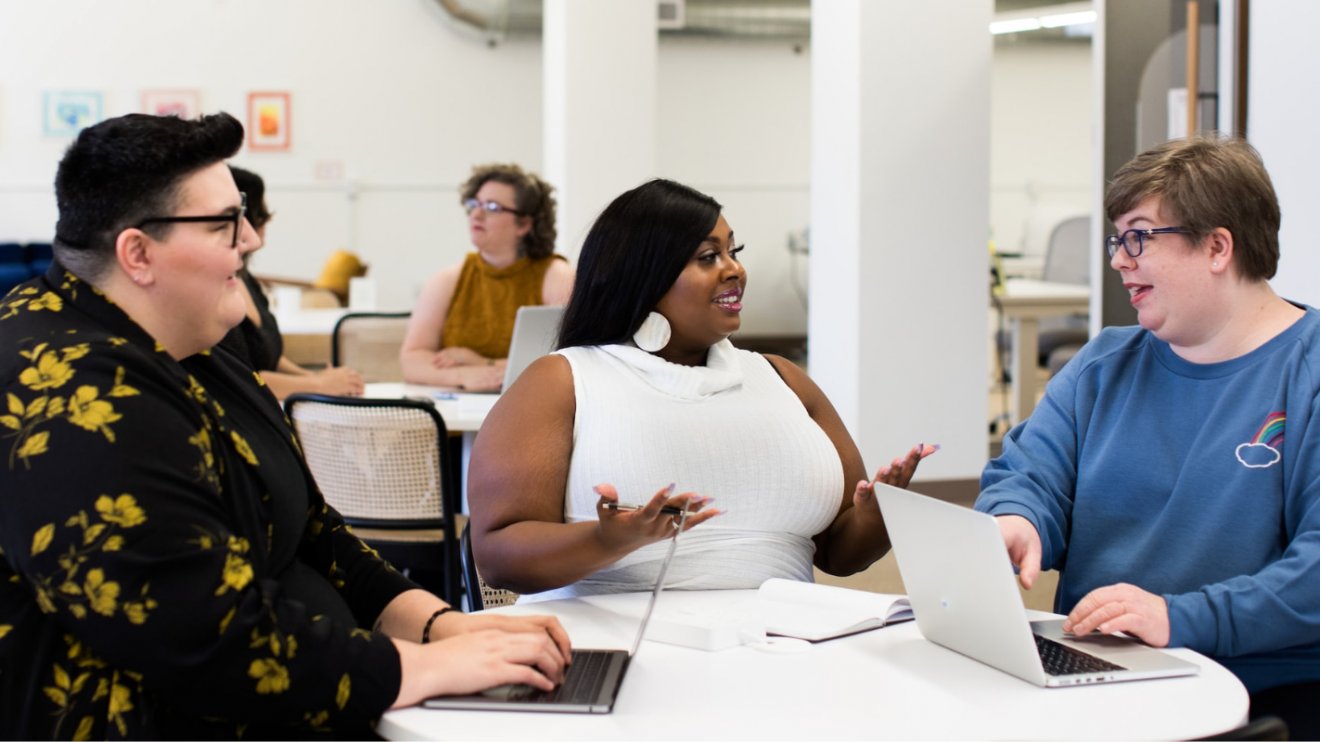Entrepreneurs know that culture can make or break an organization. At Lioness, we’re always seeing you push to create workplaces where everyone feels welcome. However, a lot of leaders don’t realize size inclusion can make a major cultural difference. We’ve already talked about how to make your business more size-inclusive for customers and clients. But to truly lead size-inclusively, you need to make sure that you’re fighting weight stigma in your team, too.
What is size inclusion and why should entrepreneurs care about it?
Size inclusion is the philosophy of respecting people regardless of their body size. It focuses on uplifting fat people who face the most stigma for their body size. (And yes, fat is not a bad word!)
One-third of American adults are fat. So, anti-fat bias likely affects some of your team members. According to research by Dove, 78 percent of women with larger bodies said they experienced size discrimination. The National Library of Medicine reports that fatter women earn less. For every six pounds heavier the average woman is, she earns 1.83 percent less per hour.
Entrepreneurs and business leaders can change these dismal numbers. If you pride yourself on leading an inclusive organization, don’t overlook size inclusion. By examining your hiring practices for anti-fat bias and being thoughtful about your team’s experience, you can make a material difference.
How to make your business more size-inclusive for your team
Do you only have straight-size employees? If so, why? Weight stigma causes hiring bias. An unwelcoming workplace can drive out bigger employees. Size inclusion, like all workplace inclusion, starts with hiring.
Hire size-inclusively
1. Mention body size and weight in your non-discrimination/equal opportunity employer statement.
This is not legally required (weight discrimination is legal everywhere but Michigan and New York City!), but mentioning body size in your non-discrimination statement will encourage candidates to apply.
2. Check your bias at the interview.
We all internalize societal biases against fat people. If someone’s resume and cover letter sound great, but you find yourself reconsidering the second she walks in the door, ask yourself whether you’re making assumptions based on her body. A quick way to check your bias is to ask yourself a question like “If I saw a smaller person dressed the same, would I think she looked professional?”
3. Keep the size wage gap in mind when you make an offer.
If you’re fighting the gender and racial pay gap with your hiring practices, you’re already set up to break the cycle of pay discrimination against fat people. Set a clear salary range for any position you’re hiring for. Base your offers on that range rather than on a potential employee’s salary history.
Treat your team size-inclusively
Happy employees are less likely to quit. Keep your team intact and comfortable by creating a safer workplace for all body types.
4. Make your workplace accessible.
If you work in person, make sure the equipment you use is designed to accommodate a range of body sizes. Opt for weight limits above 300 pounds on furniture, and be sure to offer a few wide, armrest-free chairs because armrests can pinch fat legs.
5. Pick company swag everyone can enjoy.
If you hand out t-shirts or polos, don’t buy from a supplier whose biggest size is an XL. Accessories like hats or bandanas work for almost everyone. Better yet, choose non-clothing swag items like water bottles, lunch boxes or blankets.
6. Tread extremely carefully with workplace wellness initiatives.
It’s good to care about your team’s health, but a lot of wellness initiatives rely on outdated ideas about weight. We recommend reading about the Health at Every Size approach before launching any wellness initiative.
7. Make respecting all bodies part of your personal and company values.
As a leader, you have the power to set the norms in your organization.
- Include body size in your workplace harassment policy and speak up when someone says something anti-fat. Let your team know that body shaming and stigmatizing language are unacceptable and that fat shaming is against the rules of conduct for employees at your organization.
- Model body positivity/neutrality for your team. Refuse to express shame for what you eat or how you look. Avoid commenting on others’ weight. You’re here to work, not to judge people’s bodies.
Resources to get smarter about size inclusion and fat liberation
Most people have no idea where to start making their organization more size-inclusive. If that’s you, the best place to begin is by learning. Some resources for learning more about weight stigma, size inclusion and fat liberation are:
- The Body Liberation Guide newsletter covers topics from fat representation to diet culture and much more, acting as a repository of resources for fat people and their allies.
- Your Fat Friend blog and the book What We Don’t Talk About When We Talk About Fat, by author and activist Aubrey Gordon, discuss the realities of anti-fat bias and provide concrete examples of how to make society more weight-equitable.
- The Maintenance Phase podcast debunks the junk science behind health and wellness fads, covering topics like the keto diet and myths about fat people.
- The National Association to Advance Fat Acceptance (NAAFA) has been on a mission to end size discrimination and make the world a better place for fat people for more than 50 years. NAAFA has resources about anti-fat bias, anti-racism in fat activism, and more on its website. The organization is campaigning to add height and weight to anti-discrimination laws – you can get involved by signing the petition and contacting your legislators.
Anti-fat bias is such an ingrained, rarely challenged part of our culture that it can feel awkward to bring up. But the benefits are well worth it. You’ll feel good about creating a more inclusive workspace, and your team will be glad to know your opinion of them is based on their conduct and the work they do, not their body.







Add Comment